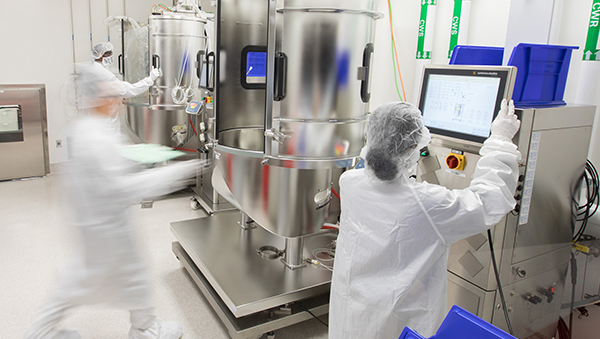A Science First Approach
Gene therapy has the potential to restore function in cells by delivering genetic material to specific cells containing genetic variants. Rather than treating chronic symptoms with medications over a lifetime, these therapies aim to treat the underlying genetic cause of the disorder, with one or a few treatments over time.
Our global infrastructure and strong collaboration across the organization allows us to combine research and manufacturing, creating opportunities to learn and apply knowledge and further accelerate innovation. In this way, we can incorporate new technologies quickly and rapidly respond to evolving regulatory requirements. This helps us transform the promise of complex, ground-breaking science into a scalable operation that can establish us as leaders in gene therapy.
We lead with a science-first approach using a focused set of criteria to select target indications, which we believe increases the chances of success for each of our programs. These criteria include:
- High potential for meaningful clinical benefit
- Monogenic diseases with well-understood biology
- Disease characteristics well-suited for treatment with our technology platforms
- Clear measures for evaluation in clinical trials
We are enabling technologies to help boost our pipeline and increase the pool of eligible patients who may benefit from our candidates. Our investigational therapies employ various techniques including gene transfer, RNA knockdown and other adeno-associated virus (AAV) delivered methods to target genetic disease.
AAVs are naturally-occurring viruses that are able to infect and enter into human cells but are not currently known to cause disease, making them an attractive and efficient vector to deliver gene therapy.1 Additionally, next-generation capsids can help improve efficacy, increase tissue reaction, reduce cost of goods and expand the pool of eligible patients.
Watch this video to learn more about gene replacement therapy.
This website describes for a general audience how genes regulate disease, how gene therapies work, and which diseases are currently treated with approved gene therapies. The site also provides numerous links to other organizations and resources to support patients and families with rare genetic disorders.
State Of The Art Manufacturing
Our integrated network of manufacturing facilities located in Tsukuba, Japan, South San Francisco, CA, and Sanford, NC allows us to expand our gene therapy manufacturing footprint to scale AAV therapy rapidly and with high quality.
Gene therapies are manufactured through a complex process in which living cells insert a functional gene into a virus, which is used as a vector to carry that gene into patients’ organs for potential benefit. The process requires advanced technology and facilities capable of producing many high-quality gene therapies. We have unique technology and state-of-the-art equipment to efficiently manufacture gene therapies so they can be delivered to many patients.
Learn more about our state-of-the-art gene therapy manufacturing facility in Sanford, North Carolina.
References
1.Wang, D., Tai, P. & Gao, G. Nature Reviews Drug Discovery 18, 358-378 (2019).


